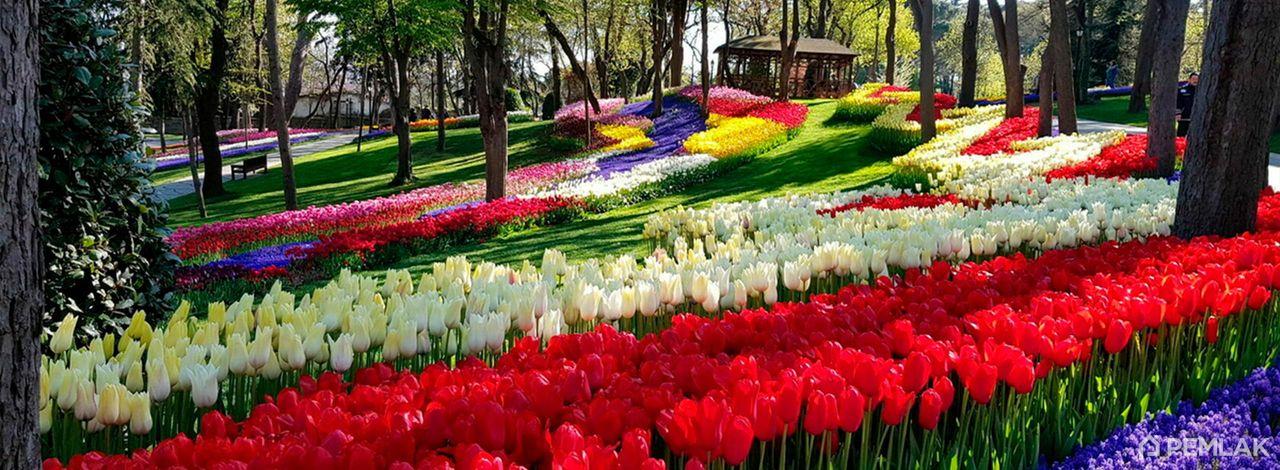Istanbul Tulip Festival: a spring wonder of modernity

Every spring, the streets, parks and squares of Istanbul are transformed into a vibrant kaleidoscope of colors, attracting millions of tourists and locals. The Istanbul Tulip Festival is not just a celebration of spring, but a revival of history, culture and aesthetics deeply rooted in Turkish identity. Although today it officially begins in April, the first preparations and plantings can be spotted as early as March, making this month the symbolic start of the flower season in the city.
We Recommend
The origins of tulip mania: from Central Asia to the Ottoman Empire
The history of tulips in Turkish culture goes back to ancient times. The first tulips were brought to Asia Minor by Turkic nomadic tribes moving from Central Asia. These flowers became popular in the court of Sultan Suleiman the Magnificent in the XVI century and reached the height of their fame during the reign of Sultan Ahmed III in the early XVIII century.
The period called the "Age of Tulips" came to symbolize luxury, sophistication and cultural flourishing. During this time, tulips became a favorite motif in art, architecture and fashion. Nightly festivities were organized on palace grounds, lit by lamps and reflected in mirrored pools among which hundreds of varieties of tulips grew. These images can still be found in the ornamentation of traditional Turkish carpets, ceramics and calligraphy.

Modern revival: the festival as part of cultural policy
The Modern Revival Festival was revived in 2005 by the Istanbul Municipality to bring tulips back into the city's culture. Since then, more than 30 million tulips of over 120 different varieties are planted in the city every April. The main venue is Emirgan Park, where floral displays, themed exhibitions, photography competitions and art installations are staged.
The festive atmosphere extends to other locations such as Gülhane Park, Yıldız Park, Sultanahmet Square, as well as the Bosphorus slopes and the streets of Beşiktaş and Üsküdar. Tourists and citizens can enjoy not only the beauty of the flowers, but also a rich cultural program: from concerts and theatrical performances to workshops on traditional crafts and gardening.
Tulip symbolism in Turkish culture
The tulip has a special meaning in Islamic culture. The word "lale" (tulip) in Ottoman Arabic script has the same letter structure as the name of Allah, which gave the flower a special sacredness. It symbolized unity, perfection and spiritual purity. In addition, the tulip is also a symbol of love and passion, making it a universal symbol of beauty and harmony.
The tulip as part of the city's identity
The festival has become part of Istanbul's urban identity. It brings together people of different ages, nationalities and faiths in celebration of spring, beauty and cultural richness. The festival is actively promoted through social media, photo and video contests, and has become part of the city's tourism brand.
In addition to its aesthetic value, the festival also fulfills an environmental and educational mission. The municipality actively attracts schoolchildren and students to participate in planting, telling them about ecosystems and the importance of green spaces in the conditions of the metropolis.
Practical information for tourists
This year's festival officially begins in early April and will last until the end of the month, but from mid-March the parks begin to fill with flowers. Attendance at all events is free. It is recommended to visit the parks during the morning hours on weekdays to avoid large crowds. Don't forget your camera - every tree and flower arrangement is worthy of a separate shot!
For a comfortable visit, it's worth dressing for the weather: April in Istanbul can be fickle, with sunny days often alternating with rain. It's a good idea to bring a blanket and have a picnic in one of the blooming parks.
The Istanbul Tulip Festival is more than just a celebration of nature. It is a cultural event that combines history, art, spirituality and modern urban life. It shows how tradition can be not only preserved but also reinterpreted to inspire new generations. Istanbul in spring is a city in bloom, a city that tells its story in the language of tulips.

Comments 0







